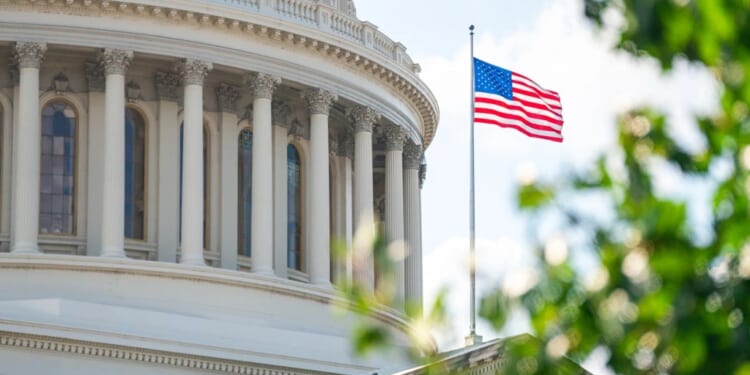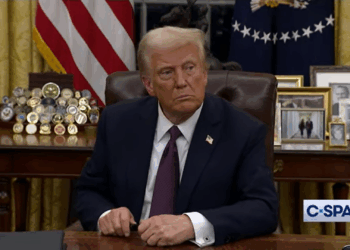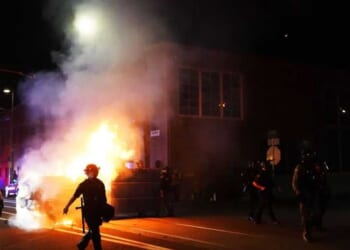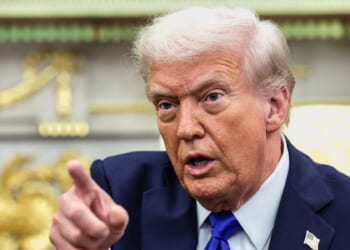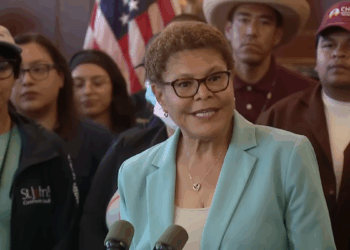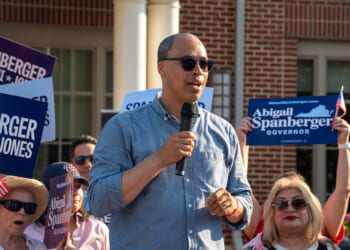Hundreds of thousands of federal employees will receive their furlough notices now that the government has shut down, and many government services will pause operations.
A GOP-sponsored continuing resolution requires 60 votes to be adopted in the Senate. Senate Republicans have a 53-47 majority, meaning at least seven Senate Democrats must vote in favor of the continuing resolution if all 53 Republicans vote for it. Sens. John Fetterman (D-PA), Angus King (I-ME), and Catherine Cortez Masto (D-NV) voted in favor of the resolution hours before the government shut down.
Senate Majority Leader John Thune (R-SD) indicated he would hold votes throughout the weekend, urging Democrats to get on board and end the shutdown. Democrats are holding out until Republicans work with them on a deal on Obamacare subsidies, which expire in December.
LIVE UPDATES: GOVERNMENT ENTERS SHUTDOWN WITH NO DEAL IN SIGHT
What is a government shutdown?
Congress is required to pass a series of 12 appropriations bills every year by Oct. 1 to fund the next fiscal year. The legislative body, however, has not passed any of the 12 bills ahead of that deadline.
A handful of appropriations bills have passed the House and Senate separately, but none have gone to conference committee, which is where the chambers work out the differences in their bills. Therefore, none have become law.
If Congress cannot pass a short-term funding measure to continue funding the government at its current levels, in what is known as a “continuing resolution,” the government will shut down until an agreement is reached.
Since 1980, there have been 14 shutdowns, according to the Bipartisan Policy Center. The longest government shutdown lasted five weeks during the Trump administration in 2018 amid disagreements over funding the president’s border wall with Mexico.
The government would experience a partial shutdown if Congress could only pass some but not all of the annual appropriations bills by Oct. 1.
What will be affected by a shutdown?
Nonessential government employees may be furloughed during a shutdown, as they are forced to take an unpaid leave of absence.
Some services will remain mostly as usual. Retirees will continue to see their Social Security checks during a shutdown. Medicare benefits will continue as normal, but some services may lag. Food benefits for nearly 42 million people through the Supplemental Nutrition Assistance Program will not be immediately disrupted, but payments could be affected later in the year, depending on how long the shutdown lasts.
The Postal Service will also continue normal operations.
Other essential services, including air traffic control, law enforcement, and power grid maintenance, will continue their operations. Air traffic could be affected, however, if controllers stop coming to work because they aren’t being paid for the duration of the shutdown, as occurred in the 2018-2019 shutdown.
Previous shutdowns have closed hundreds of national parks and museums, curtailed services for veterans, suspended health inspections, and pushed back immigration hearings.
What is the debate in Congress about this year?
Republicans and Democrats have blamed each other for the shutdown.
Democratic leaders have advocated an extension of Obamacare subsidies, which expire at the end of the year. House Speaker Mike Johnson (R-LA) and Thune are not expected to budge because the GOP refused to include any Democratic requests.
Thune has said he is open to talking about extending the healthcare subsidies later in the year but has rejected tying them to a measure to keep the government open.
“I’m very comfortable with the position that we have,” Thune said on NBC News’s Meet the Press on Sept. 28. “It’s to fund the government, finish the appropriations process, and deal with the issues the Democrats want to deal with after we keep the government open.”
President Donald Trump met with Senate Minority Leader Chuck Schumer (D-NY) and House Minority Leader Hakeem Jeffries (D-NY) on Monday at the White House, after previously canceling a negotiation meeting at Johnson’s urging.
However, leaders from both parties after the meeting said there was no movement, and the Continuing Resolution was voted down Tuesday evening, leading to the shut down. After the meeting, Trump has been posting photos and videos of Jeffries and Schumer that mock them. He also repeated claims that the Democrats are holding out for funding for illegal immigrants’s healthcare.
“They say that undocumented people are going to get these credits. That is absolutely false. That is one of the big lies they tell so they don’t have to discuss the issues,” Schumer said.
The Office of Personnel Management issued guidance prior to the shutdown about what federal workers can expect. They will fall be deemed either furloughed, required to work without pay, or funded separately. Those expected to work won’t be paid until after the shutdown is resolved.
The White House budget office additionally released a memorandum that directed federal agencies to prepare for permanent layoffs if the government shuts down, which has further angered Democrats.
The House, with its razor-thin GOP majority, passed a continuing resolution that included $88 million in emergency funding to increase security for all three branches of government.
FEDERAL AGENCIES TOLD TO PREPARE REDUCTION-IN-FORCE PLANS IF GOVERNMENT SHUTS DOWN
That measure failed in the Senate as Democrats blocked it. Thune said he would bring it for another vote before the chamber on Tuesday night, just before the shutdown deadline.

